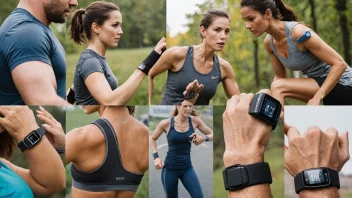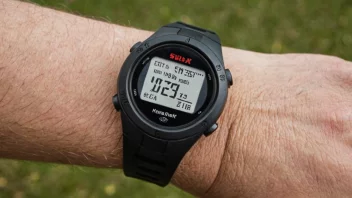In the age of technology, personal training has taken a revolutionary turn with the advent of wearable devices. These gadgets have become essential tools for fitness enthusiasts, helping them track their workouts, monitor their health, and enhance overall performance. The integration of wearables into personal training not only provides athletes and casual gym-goers with valuable data but also fosters a more personalized and effective approach to fitness. This article delves into how wearables are changing the landscape of personal training, exploring their features, benefits, and the future of fitness technology.
The Rise of Wearable Technology
Wearable technology has surged in popularity over the past decade. From the first fitness trackers to advanced smartwatches, these devices have evolved significantly. The primary purpose of wearables is to provide users with real-time data about their physical activities, health metrics, and even sleep patterns. This data is crucial for personal trainers and users alike, as it allows them to set realistic goals, track progress, and make informed decisions regarding their fitness routines.
Types of Wearable Devices
- Fitness Trackers: These devices monitor steps, heart rate, calories burned, and other physical activities. Popular brands include Fitbit, Garmin, and Xiaomi.
- Smartwatches: Beyond fitness tracking, smartwatches offer features like notifications, music control, and GPS. Brands like Apple, Samsung, and Fitbit dominate this market.
- Smart Clothing: Garments equipped with sensors can track metrics such as heart rate, body temperature, and even respiratory rate. Companies like Athos and Hexoskin are leading the charge in this area.
- Heart Rate Monitors: These devices provide accurate heart rate data, which is essential for understanding workout intensity. They can be standalone devices or integrated into other wearables.
Benefits of Wearables in Personal Training
Wearables offer a multitude of benefits that enhance personal training experiences. Here are some of the most significant advantages:
1. Real-Time Feedback
One of the standout features of wearables is the ability to provide real-time feedback during workouts. This allows users to adjust their intensity, form, and duration on the fly. For example, a fitness tracker that monitors heart rate can signal when a user is training in their optimal heart rate zone, maximizing the effectiveness of their workout.
2. Data-Driven Insights
Wearables collect vast amounts of data, enabling users to gain insights into their performance over time. Analyzing this data helps personal trainers tailor fitness plans to meet individual needs. For example, if a user consistently underperforms in certain exercises, trainers can modify their regimen to address those weaknesses.
3. Enhanced Motivation
The gamification of fitness through wearables can significantly enhance motivation. Many devices feature challenges, rewards, and social sharing options, encouraging users to stay active. Competing with friends or achieving personal milestones creates a supportive community that fosters accountability.
4. Health Monitoring
Wearables not only track fitness but also monitor overall health. Features such as sleep tracking, stress monitoring, and blood oxygen level assessments provide users with a holistic view of their well-being. This information is crucial for personal trainers who aim to optimize their clients' health alongside their fitness goals.
Integrating Wearables into Personal Training
To make the most of wearable technology, both trainers and clients should understand how to integrate these devices into their training routines effectively.
1. Setting Goals
Before starting a training program, it’s essential to establish clear, achievable goals. Whether it’s losing weight, building muscle, or improving endurance, wearables can help track progress toward these objectives. Personal trainers can use data from wearables to set realistic benchmarks and adjust training plans accordingly.
2. Monitoring Progress
Regularly reviewing data collected from wearables allows for ongoing adjustments to training plans. Trainers can analyze metrics such as workout intensity, recovery times, and overall activity levels to ensure clients remain on track. This data-driven approach enhances accountability and encourages continuous improvement.
3. Customizing Workouts
Wearables enable trainers to customize workouts based on real-time feedback. For instance, if a client's heart rate spikes too high during a particular exercise, the trainer can suggest modifications to ensure safety and effectiveness. This level of personalization is invaluable for achieving fitness goals.
4. Building a Support System
Leveraging the social features of wearables can help create a supportive training environment. Personal trainers can encourage clients to connect with friends, join challenges, and share their progress on social media. This camaraderie can significantly boost motivation and commitment to fitness.
The Future of Wearables in Personal Training
As technology continues to advance, the future of wearables in personal training looks promising. Innovations such as AI-driven analytics, improved sensor technology, and enhanced connectivity will further enhance the user experience. Here are a few trends to watch:
1. Artificial Intelligence
AI has the potential to revolutionize how wearables analyze data. By leveraging machine learning algorithms, wearables can provide even more personalized training recommendations, adapting to user behavior and preferences over time.
2. Advanced Health Metrics
Future wearables may offer more comprehensive health monitoring capabilities, including metrics like hydration levels, muscle fatigue, and even mental health indicators. This information will help trainers create more holistic fitness plans that encompass both physical and mental well-being.
3. Integration with Other Technologies
As the Internet of Things (IoT) continues to grow, wearables will become increasingly integrated with other smart devices. For instance, a wearable could sync with a smart home gym to adjust equipment settings based on a user’s performance data, creating a seamless workout experience.
4. Virtual and Augmented Reality
Wearables may also play a role in the rise of virtual and augmented reality in fitness. Imagine using a VR headset alongside a wearable that tracks your movements, providing an immersive training experience that feels like a game rather than a workout.
Conclusion
Wearable technology is undeniably transforming the world of personal training. By providing real-time feedback, data-driven insights, and enhanced motivation, wearables empower users to take control of their fitness journeys. As we look to the future, the integration of AI, advanced health metrics, and other technological innovations will only enhance the potential of wearables in fitness. For both trainers and clients, embracing this technology is crucial for maximizing performance and achieving sustainable results in their personal training endeavors.






